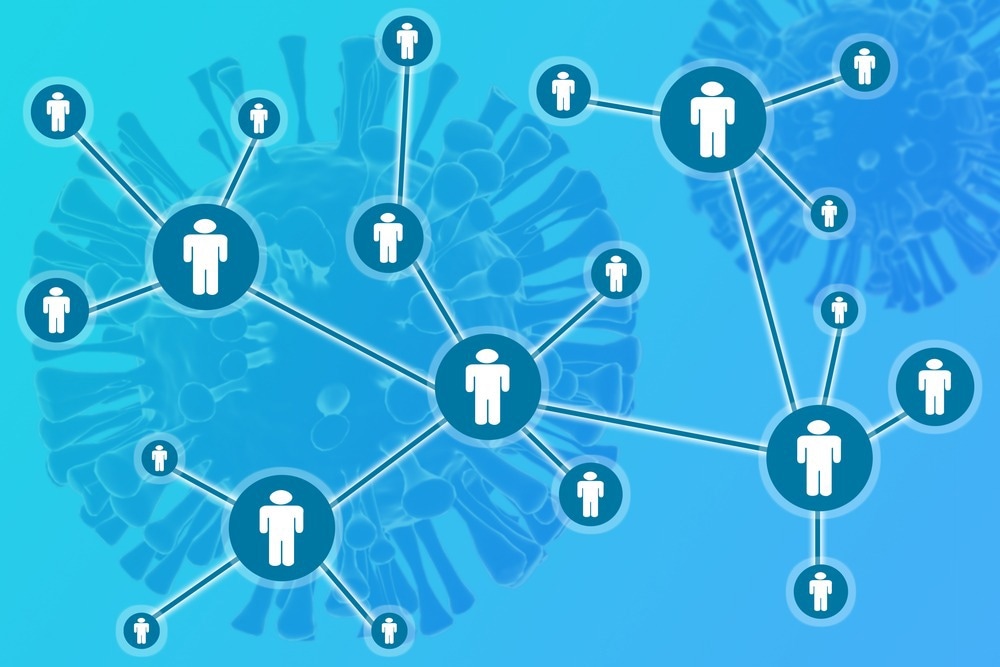In a recent study published in Nature Communications, researchers reported that backward contact tracing is crucial to suppressing transmission of severe acute respiratory syndrome coronavirus 2 (SARS-CoV-2).
 Study: Empirical evidence on the efficiency of backward contact tracing in COVID-19. Image Credit: WESTOCK PRODUCTIONS/Shutterstock
Study: Empirical evidence on the efficiency of backward contact tracing in COVID-19. Image Credit: WESTOCK PRODUCTIONS/Shutterstock
Background
Interventions such as isolation of the infected case, contact tracing, and quarantine have been instrumental in controlling the coronavirus disease 2019 (COVID-19) pandemic. Contact tracing is to identify and disrupt the viral transmission chain by isolating infected cases and quarantining at-risk individuals.
Forward contact tracing of an index case (infected case undergoing contact tracing) aims to disrupt onward transmission from child cases (those infected by the index case) by quarantining and testing contacts of the index case while infectious. It is assumed that the infectious period commences two days before symptoms onset or diagnosis.
Moreover, this approach would probably identify the parent case, viz., the infector of the index case, and sibling cases, also infected by the same parent case. In contrast, backward/bidirectional contact tracing intends to specifically identify parent and sibling cases by going back in time. Backward tracing could be implemented via two strategies: 1) source event approach and 2) extended window approach.
Numerous countries have focused on source events, where an index case is suspected of being infected. In the latter approach, the contact tracing window is extended further back in time. This assumes that the parent and sibling cases of the index could be identified if the tracing window is extended (back in time) by at least the index case’s incubation period.
The study and findings
In the present study, researchers computed the positivity rate of additional close contacts identified in an extended tracing window of seven days before diagnosis or symptom onset. The primary analysis included 659 index cases; most (72.5%) self-reported symptoms at testing. The mean age of index cases was 21.4 years.
Contact tracing of index cases identified 3971 contacts, with six contacts per case. Of these, 24.1% were excluded because the contact tested SARS-CoV-2-positive less than 60 days before the positive test of the index case. After additional exclusions, the resultant 2396 contacts were classified into two groups – standard tracing and extended contact tracing window.
The standard window group had 1608 subjects in close contact with the index case two days before symptom onset. The extended window group comprised 788 contacts in the extended tracing window (three to seven days before symptom onset). As controls, 1461 individuals were included who self-reported symptoms indicative of COVID-19.
By extending the tracing window, the team identified 49% more at-risk contacts and 42% more cases as contacts of one index case compared to standard tracing practice. The risk of infection remained similar between the two groups (standard: 17.2%; extended: 14.6%). However, the risk was significantly higher in the extended group than in controls (6.5%).
The team identified a suspected source event for 80.6% of index cases. When the contact tracing interview did not find a suspected source, the infection risk for extended window tracing contacts was 17.1%. When the source event was identified, the risk of infection was four times higher for contacts who attended the event than those who did not. In subgroup analysis, the authors determined that most contacts were friends or family members.
Contacts underwent RT-PCR tests immediately after identification and after seven days of exposure (to index case). Because backward traced contacts were detected on average four days longer after exposure than forward traced contacts, a single test was most likely to serve as a ‘test to trace’ and ‘test to release’ strategy. They estimated a 17% decline in the number of tests needed per traced contact, based on a delay of one day from index case testing to contact testing.
Moreover, the mean quarantine duration for backward traced contacts was three days shorter than for forward traced connections. When iterative tracing of forward and backward traced contacts was accounted for, an extended window detected 55% more cases than forward tracing alone, with 61% more asymptomatic cases. This also prevented 38% more infections; meanwhile, it required 78% more contacts for tracing and 67% more tests.
Conclusions
The study presented a strategy for backward tracing, improving the effectiveness of contact tracing and identifying an additional 42% of cases not detected via the tracing approach in most jurisdictions. Extending the tracing window to seven days before symptom onset or diagnosis and referring all close contacts (and co-attendees of small events) in this period for testing allowed rapid identification of sibling cases.
One significant trade-off of backward tracing was that backward traced infected contacts were identified 1.8 days later than forward traced contacts. Taken together, the findings suggest that extending the contact tracing window beyond the infectious period of the index case could lead to a significant added benefit at a low relative cost.